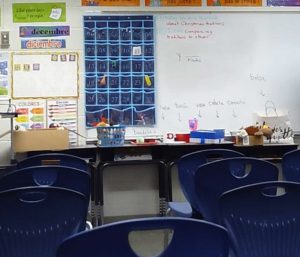Background: TPR in Language Education
Total Physical Response (TPR) is a teaching method that leverages movement and action to enhance language comprehension. Developed by Dr. James Asher, TPR is rooted in the belief that associating language with physical movement creates a more profound and memorable learning experience. In TPR, students respond to verbal commands by performing corresponding actions, creating a dynamic and interactive language-learning environment.
Why TPR is Effective
TPR aligns seamlessly with the principles of Comprehensible Input (CI), emphasizing the importance of exposing learners to language in a context they can understand. The incorporation of physical movements enhances the comprehensibility of language, making it an effective tool for educators striving to create an engaging and accessible language-learning experience.
Maximizing TPR in the CI Classroom
- Daily 10-Minute TPR Sessions: Implementing TPR need not be time-consuming. Integrate short, daily TPR sessions of no more than 10 minutes into your CI classroom routine. These brief bursts of physical activity not only maintain student interest but also reinforce language concepts in a memorable way. I use a variety of stuffed animals, toy foods, and containers. I say things like “Find the monkey” and “Put the cheese in the bucket.” I even use the number pocket chart to have students put them in the numbered pouch to practice numbers. You can also use these to tell a story with TPR. You can flip this by projecting sentences on the screen and have students tell you, the teacher, what to do. You can even do a reading based TPR where students read the sentence and complete the action (see number 4). I have done all these to keep it fresh.

This is my TPR area. I use a variety of containers, stuffed animals, toys, and toy food in TPR. - Involving the Rest of the Class: To keep the entire class engaged while one student is actively participating in TPR, consider involving the rest of the students as observers or collaborators. Have them provide feedback on the accuracy of the actions performed, creating a supportive and interactive learning community.
- Peer Demonstrations: Encourage students to take turns leading TPR activities. This not only reinforces their understanding of language concepts but also fosters a sense of leadership and responsibility. Peers can actively participate by following the commands and offering constructive feedback. You can do this in pairs or small groups. Give them a box or basket of items to use and tell each other what to do. The Dollar Tree is a great resource for buying inexpensive containers and toys.
- Incorporate Storytelling: Weave TPR into storytelling sessions, with one student acting out key elements of the narrative. The rest of the class can follow along, reinforcing language comprehension through contextual understanding. Rotate students in the role of the storyteller to maintain variety.
- Group TPR Challenges: Divide the class into small groups and assign each group a TPR challenge related to the current language focus. This collaborative approach not only encourages teamwork but also allows every student to actively participate in TPR within their groups.
By infusing TPR into the CI classroom, educators can create a lively and effective language-learning environment. The brief, daily sessions ensure consistent engagement, and involving the entire class fosters a sense of community while reinforcing language comprehension in an enjoyable and memorable way.